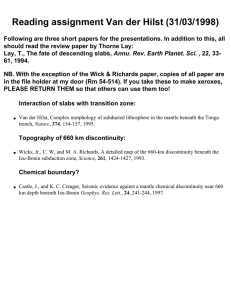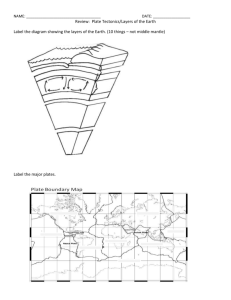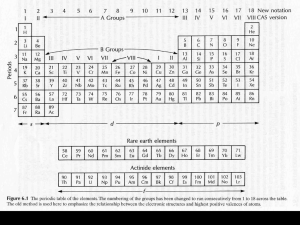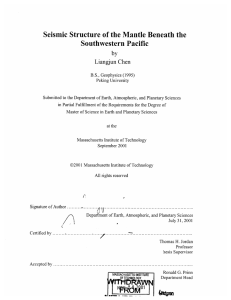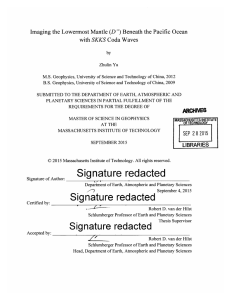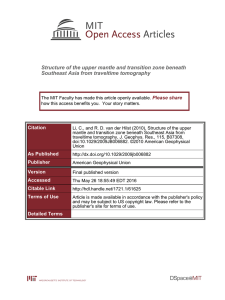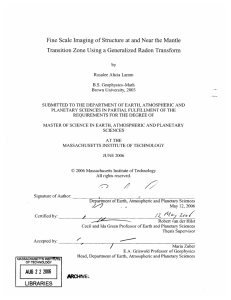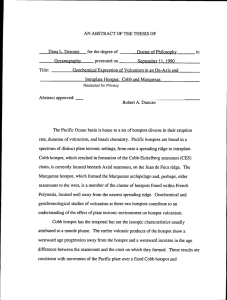Whole mantle shear structure beneath the East Pacific Rise
advertisement
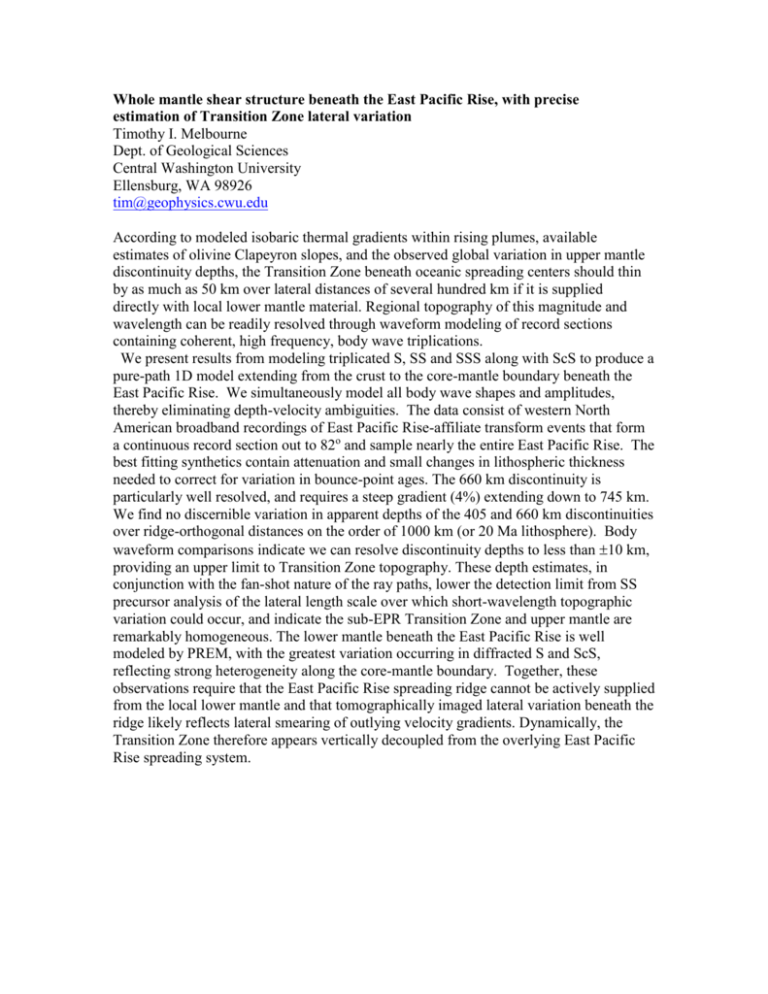
Whole mantle shear structure beneath the East Pacific Rise, with precise estimation of Transition Zone lateral variation Timothy I. Melbourne Dept. of Geological Sciences Central Washington University Ellensburg, WA 98926 tim@geophysics.cwu.edu According to modeled isobaric thermal gradients within rising plumes, available estimates of olivine Clapeyron slopes, and the observed global variation in upper mantle discontinuity depths, the Transition Zone beneath oceanic spreading centers should thin by as much as 50 km over lateral distances of several hundred km if it is supplied directly with local lower mantle material. Regional topography of this magnitude and wavelength can be readily resolved through waveform modeling of record sections containing coherent, high frequency, body wave triplications. We present results from modeling triplicated S, SS and SSS along with ScS to produce a pure-path 1D model extending from the crust to the core-mantle boundary beneath the East Pacific Rise. We simultaneously model all body wave shapes and amplitudes, thereby eliminating depth-velocity ambiguities. The data consist of western North American broadband recordings of East Pacific Rise-affiliate transform events that form a continuous record section out to 82o and sample nearly the entire East Pacific Rise. The best fitting synthetics contain attenuation and small changes in lithospheric thickness needed to correct for variation in bounce-point ages. The 660 km discontinuity is particularly well resolved, and requires a steep gradient (4%) extending down to 745 km. We find no discernible variation in apparent depths of the 405 and 660 km discontinuities over ridge-orthogonal distances on the order of 1000 km (or 20 Ma lithosphere). Body waveform comparisons indicate we can resolve discontinuity depths to less than 10 km, providing an upper limit to Transition Zone topography. These depth estimates, in conjunction with the fan-shot nature of the ray paths, lower the detection limit from SS precursor analysis of the lateral length scale over which short-wavelength topographic variation could occur, and indicate the sub-EPR Transition Zone and upper mantle are remarkably homogeneous. The lower mantle beneath the East Pacific Rise is well modeled by PREM, with the greatest variation occurring in diffracted S and ScS, reflecting strong heterogeneity along the core-mantle boundary. Together, these observations require that the East Pacific Rise spreading ridge cannot be actively supplied from the local lower mantle and that tomographically imaged lateral variation beneath the ridge likely reflects lateral smearing of outlying velocity gradients. Dynamically, the Transition Zone therefore appears vertically decoupled from the overlying East Pacific Rise spreading system.
